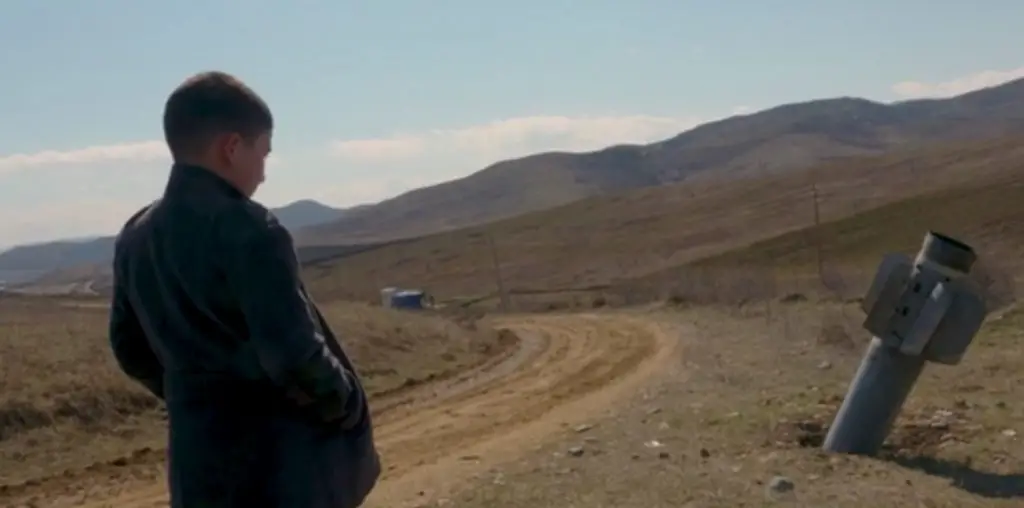
It took Mehboob Khan’s 1957 epic “Mother India” 45 years to achieve American release. With any luck, another 45 years will pass before it is shown again. While celebrated as India’s answer to “Gone with the Wind,” the film is closer in spirit and production to “Raintree County”: ponderous, splattery, overstuffed, and interesting in isolated sections rather than in its unsatisfactory whole.
“Mother India” runs nearly three hours. I had to leave after the first hour; remaining for the other two-thirds seemed more like a fall into masochism than a film review assignment. Strangely, “Mother India” actually received an Academy Award nomination way-back-when for Best Foreign Language Film. It would seem the Foreign Language Film category has a very long history for weird selections.
“Mother India” opens with a montage of tractors plowing the land while bridges and dams are being constructed. Except for the sitar soundtrack, you’d think you wandered into a Stalinist paean to the glories of industrial planning. In the midst of the hubbub is an elderly woman who is the oldest person in the village. From the heavy make-up, it looks like she is the oldest person on the planet. She is called on to open a new dam for the village and, with great hesitation (she literally has to be dragged to the event), she arrives to set the water flowing. Then the film abruptly flashbacks to her personal tale of woe beginning on her wedding day.
She is Radha (played by the very beautiful Nargis), a blushing bride joined in matrimony to the farmer Shamu (played by Raaj Kumar with such splashing exuberance that his character seems to be the human cousin of the famous killer whale of the same name). The wedding is a big hit with the villagers, but there is a significant problem surrounding the ceremony: Shamu’s mother mortgaged the family farm to the evil moneylender Sukhilala in order to finance the shindig. Sukhilala clearly enjoys being the villain, and at one point he twirls his handlebar mustache and snickers melodramatically while surveying the havoc he brings. Had he left rural India for Hollywood, he could have easily found work menacing Mabel Normand in the Mack Sennett comedies.
Needless to say, life for Radha and Shamu is hardly a bowl of curry. One of their oxen drops dead, one of their kids exhibits signs of delinquency, their crops fail, they fall deeper and deeper into debt, and Shamu winds up losing both arms in a farming accident. If this isn’t bad enough, there is also an occasional pause for the typically silly Bollywood musical numbers that pop up in Indian movies regardless of the subject matter. In this case, we have a troop of sari-clad starlets dancing with scythes while harvesting cotton. And this is only the first hour! The remaining two-thirds which I walked away from has Shamu running away from home and leaving Radha to care for their children and farm and debt. One of the kids dies, the other becomes a bandit, the moneylender sexually harasses Radha, a famine comes, then a flood, and then…well, it is merciful that Radha lacks indoor plumbing or else filmmaker Khan would have thrown in the proverbial kitchen sink.
Despite the surplus of plot twists, “Mother India” is so sluggish that an hour’s viewing feels like a semi-eternity. Much of the problem comes in the acting, which is standard of any Bollywood epic (ranging from wooden romantic leads to overkill clowning from the stock stooges and villains) but painfully one-dimensional to Western audiences. Rather than fuel the production with pure emotional energy, the unsatisfactory acting dilutes the importance of the storylines and frequently degenerates the film into mild camp. The film becomes ridiculous as an epic tale of grief is performed by the human equivalent of stick figures.
The print in circulation doesn’t help much. The American release of “Mother India” promises a “ravishing new print,” although the film actually looks more ravaged than ravishing as the original Gevacolor cinematography (transferred to Technicolor) is rather faded and the print is scratched in a few places. The film was clearly not restored, which is a shame as the cinematography and art direction is often quite striking despite the time-faded hues in the current release print.
“Mother India” is not without interest to anyone who loves Asian cinema. The film is generally regarded as a landmark in Indian cinema, and no less a figure than Salman Rushdie proclaimed it as the “all-conquering movie.” Outside of India, however, “Mother India” is more of a curio than a classic and it takes the strongest of constitutions to endure this film without entertaining notions of matricide.

Your mom should have aborted you.